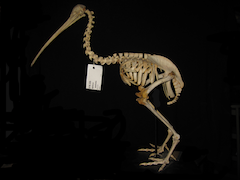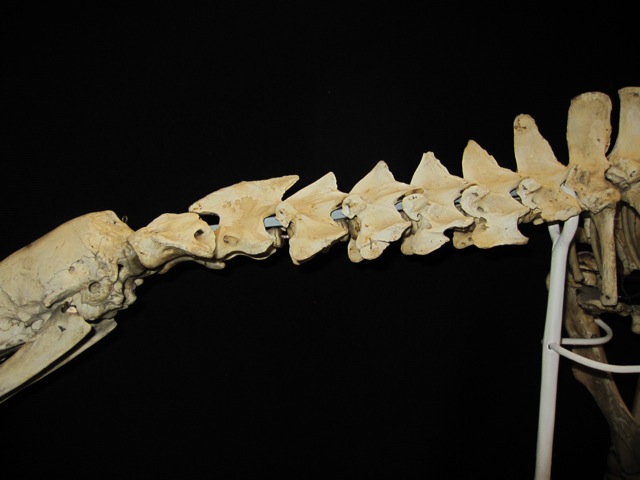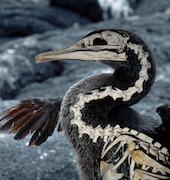
This skeleton of a kiwi (Apteryx australis) is mounted with its neck vertebrae in the undeflected state, or Osteologically Neutral Pose (ONP), which often corresponds to a default posture of the animal when "just hanging around" vigilant or alert state of rest. There are some notable exceptions to ONP being one of the default alert poses of an animal, and animals generally feed by lowering the head below the height defined by the ONP (as does the kiwi when foraging, where it scrunches down close to the ground seeking insects).
Photographed at the Cambridge University Museum of Zoology in collaboration with John Martin.


